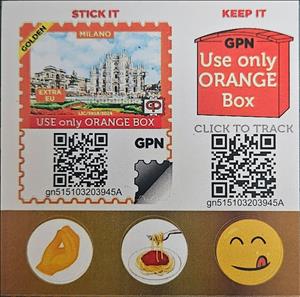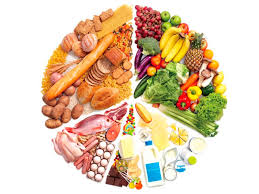Stamp: Milano - "Duomo" di Milano (Italy 2024)
Milano - "Duomo" di Milano (Italy 2024)
01 January (Italy ) within release Global Postal Service / Global Post Network goes into circulation Stamp Milano - "Duomo" di Milano face value EXTRA No Face Value
| Stamp Milano - "Duomo" di Milano in catalogues | |
|---|---|
| Colnect codes: | Col: IT-GPN 2024-05 |
Stamp is square format.
Only available within in Milano. For postal card only, to send to EU countries (excluding Italy) by using GPN mail box exclusively. This stamp is issued by Global Post Network (GPN) the new compagny name of Global Post Service (GPS). Issued in panes including one stamp, one QR code for tracking and six decorative labels.Also in the issue Global Postal Service / Global Post Network:
- Stamp - Firenze. face value 2.60;
- Stamp - Milano - "Duomo" di Milano face value EXTRA;
- Stamp - Milano - "Duomo" di Milano face value EXTRA;
- Stamp - Milano - Navigli face value EXTRA;
- Stamp - Milano - Navigli face value EXTRA;
- Stamp - Milano - Ottagono della Galleria Vittorio Emanuele face value EXTRA;
- Stamp - Milano - Ottagono della Galleria Vittorio Emanuele face value EXTRA;
- Stamp - Milano - Piazza del Duomo face value EXTRA;
- Stamp - Milano - Piazza del Duomo face value EXTRA;
Stamp Milano - "Duomo" di Milano it reflects the thematic directions:
A church building, often simply called a church, is a building used for Christian religious activities, particularly worship services. The term in its architectural sense is most often used by Christians to refer to their religious buildings, but it is sometimes used (by analogy) for buildings of other religions. In traditional Christian architecture, the church is often arranged in the shape of a Christian cross. When viewed from plan view the longest part of a cross is represented by the aisle and the junction of the cross is located at the altar area. Towers or domes are often added with the intention of directing the eye of the viewer towards the heavens and inspiring church visitors. Modern church buildings have a variety of architectural styles and layouts; many buildings that were designed for other purposes have now been converted for church use; and, similarly, many original church buildings have been put to other uses. The earliest identified Christian church was a house church founded between 233 and 256. During the 11th through 14th centuries, a wave of building of cathedrals and smaller parish churches occurred across Western Europe. A cathedral is a church, usually Roman Catholic, Anglican, Oriental Orthodox or Eastern Orthodox, housing the seat of a bishop.
Food is any substance consumed by an organism for nutritional support. Food is usually of plant, animal, or fungal origin and contains essential nutrients such as carbohydrates, fats, proteins, vitamins, or minerals. The substance is ingested by an organism and assimilated by the organism's cells to provide energy, maintain life, or stimulate growth. Different species of animals have different feeding behaviours that satisfy the needs of their metabolisms and have evolved to fill a specific ecological niche within specific geographical contexts.
A hand is a prehensile, multi-fingered organ located at the end of the forearm or forelimb of primates such as humans, chimpanzees, monkeys, and lemurs. A few other vertebrates such as the koala (which has two opposable thumbs on each "hand" and fingerprints remarkably similar to human fingerprints) are often described as having "hands" instead of paws on their front limbs. The raccoon is usually described as having "hands" though opposable thumbs are lacking.



